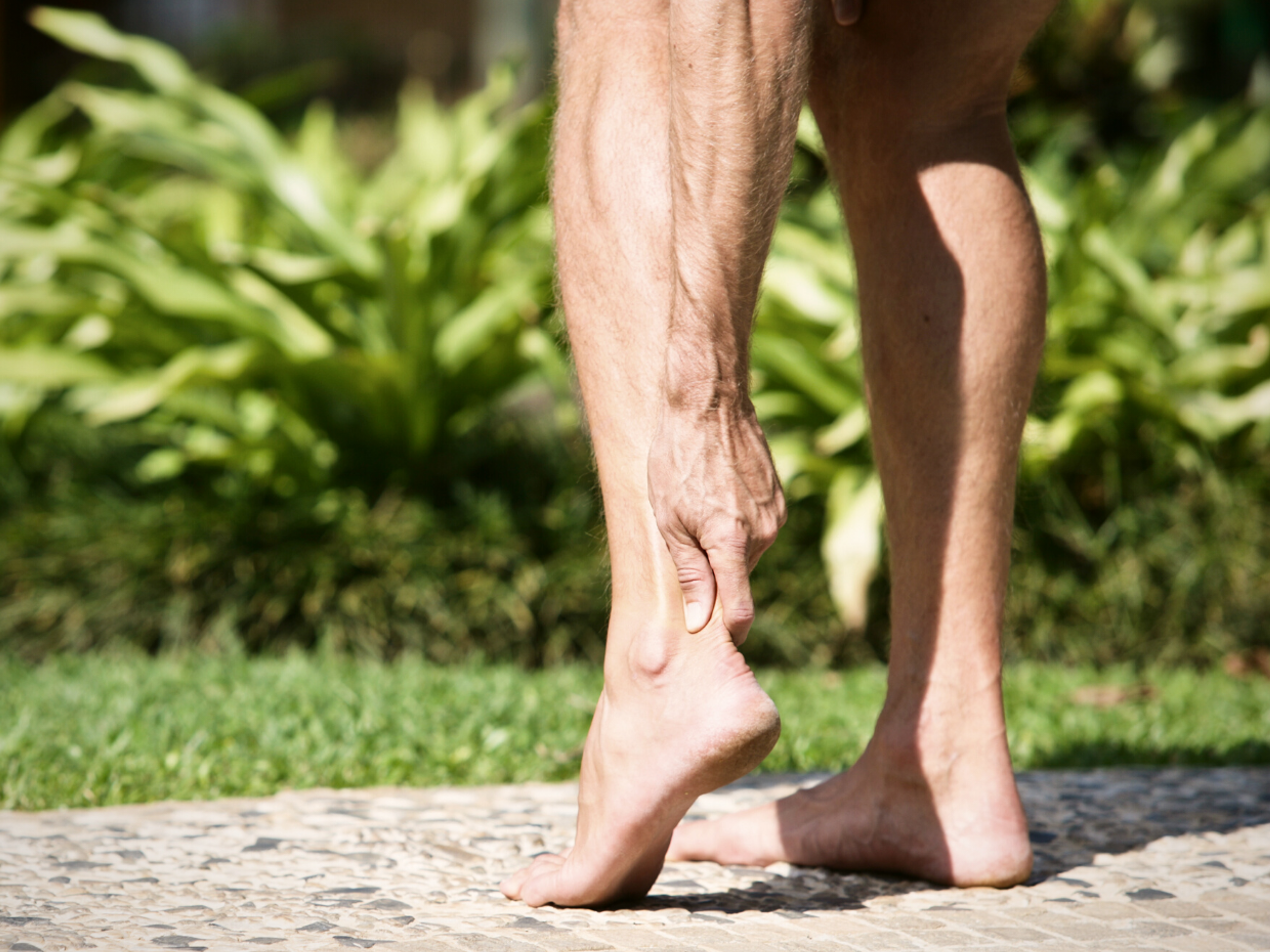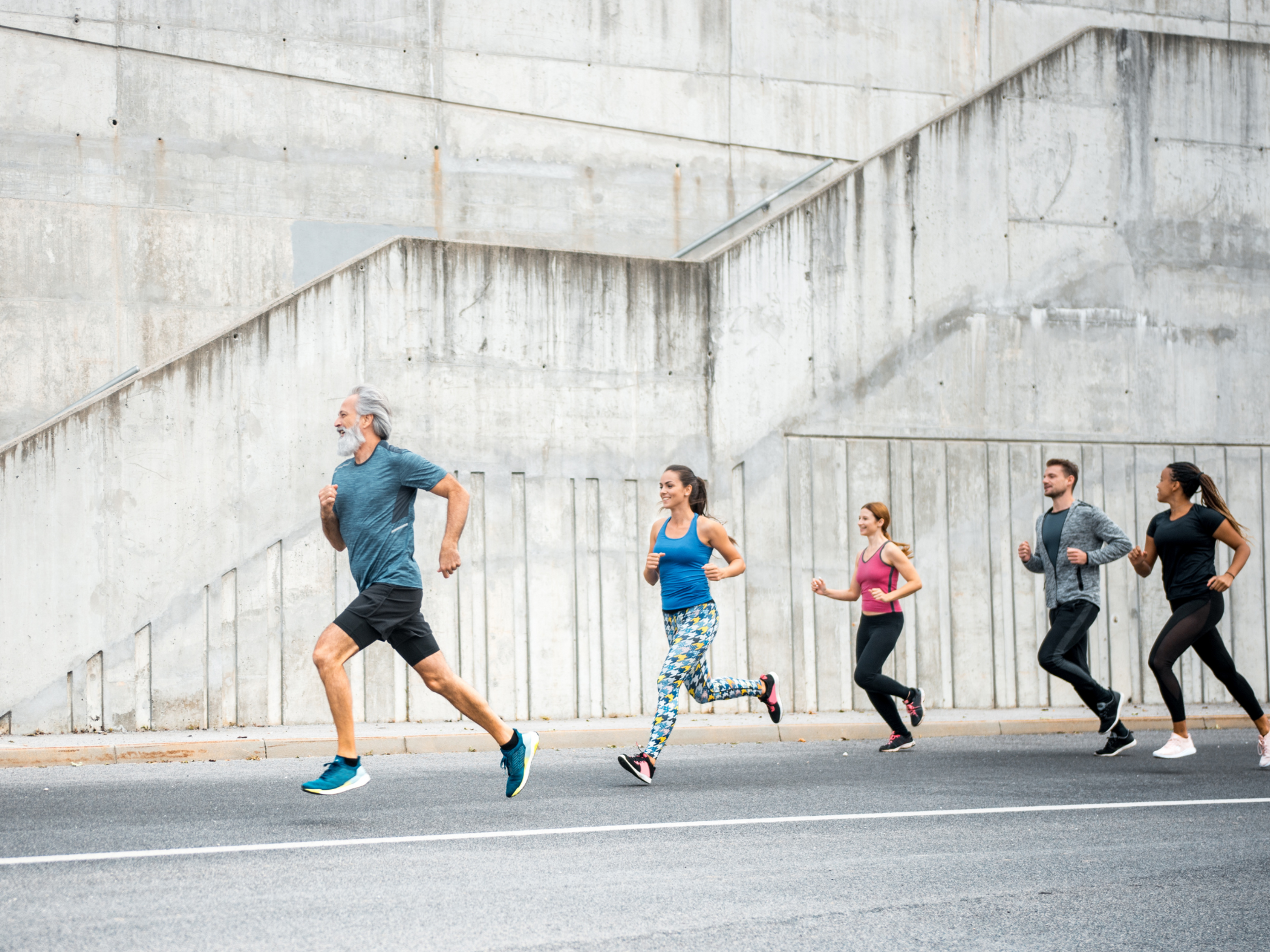Gluteal tendinopathy exercises to avoid (and what runners should focus on instead)
Want to know the quickest way to start making a positive difference to your gluteal tendinopathy pain and begin recovering?
Current research says the best way to do this is to start reducing the compressive forces on your tendon and progressively build your tendon strength to cope with the loads that your sport and physical activities demand.
This article will help you understand how you can do this and why it’s necessary to do it this way.
First, let's briefly recap how tendinopathies develop and the likeliest cause of gluteal tendinopathy.
How tendinopathy develops
Tendons are good at coping with normal levels of strain
Every day, when you exercise or do physical activity, your muscles and tendons develop tiny injuries and repair themselves. This normal and healthy process helps make your body stronger over time.
Too much strain, too little recovery
If you load your tendons with more than they can handle or don’t allow enough recovery time, the small injuries that develop in your tendon accumulate, affecting your tendon’s structure and eventually causing tendinopathy.
Too much compression
The glute medius and minimus tendons are the most commonly affected tendons in gluteal tendinopathy, likely because of their location.
They lie between the outer hip structures (glute max, tensor fascia latae, IT band) and your hip bones. So, when your leg moves inward or across your midline, it pulls all these structures into a stretch and compresses the glute medius and minimus tendons against the bones.
Tendinopathy can develop when this compression is sustained for long periods or happens repetitively with high loads.
How does tendinopathy affect your tendons?
Tendinopathy changes the structure of your tendon, causing it to lose strength, meaning its capacity to cope with load is lower, and it's more likely to get injured again.
If you keep training through the pain with gluteal tendinopathy, you won’t break the cycle of "too much strain and not enough recovery.” Your tendon will become progressively more irritated, and eventually, very little activity will bring on your pain.
Now let's look at what to avoid and focus on to help you recover.
Gluteal tendinopathy exercises to avoid
Evidence indicates that managing loads to reduce compressive and tensile (pulling) forces on your gluteal tendons can help manage tendinopathy.
Stretches
Runners are often advised to do stretches for gluteal tendinopathy to improve their hip flexibility and reduce stiffness. But, the research doesn't support this advice, and these stretches often increase pain.
Although you may feel tightness in your hip and buttock area when you have gluteal tendinopathy, this sensation is likely from the irritation in your tendon and not the tightness in your muscle. The stiffness feeling usually improves as your tendon recovers.
Remember, excessive gluteal compression is what likely led to your gluteal tendinopathy. So, stretching the area doesn't usually help and can worsen your pain because it compresses the irritated tendons (a bit like pressing on a bruise).
What to avoid
- Any movement or stretches that involve bringing your knee across your body, for example, glutes, piriformis, buttock, lower back rotation stretches
- Any stretches that push your hip outward, like IT band stretches
✅What to do instead
- Strengthening exercises to restore the strength and endurance of your tendon - this will allow the pain to calm down and your muscles to be less irritated.
Clams and side-lying exercises (initially)
The clam and side leg lift exercises are commonly prescribed for gluteal tendinopathy rehab. But they can often aggravate your pain in the early stages because they stretch and compress the tendons.
What to avoid:
- Hip exercises that take your leg past the midline or rotate it far backward - these can be added later in your rehab plan
✅What to do instead:
- Strengthening exercises where the hip is in a neutral position, e.g., isometric hip abduction with pillows for guidance
The Exakt Health app is designed to help solve this problem. It provides tailored, evidence-based exercises that progressively load your tendons, building up your strength over time and helping to reduce pain in the long run.
The best exercises for gluteal tendinopathy
Strengthening exercises are best for recovering from gluteal tendinopathy.
Before we move on to the exercises, here are a few guidelines to follow to help you get the best results.
Guidelines for gluteal tendinopathy exercises
Use pain to guide your rehab
Unfortunately, there is no specific dosage (e.g., repetitions and sets) for gluteal tendinopathy exercises. How much you do will depend on your tolerance during the exercise and 24 hours after, as with all tendinopathies.
A good way to correct your dosage is to:
- Start with short holds and a few repetitions
- Check how your pain reacts in the 24 hours after doing the exercises
- Progress or adapt the exercise dosage accordingly: If your pain flared up significantly, reduce the amount you do; if your hip tolerated it well, continue with that dosage or even increase it slightly
How to start
For extremely sensitive gluteal tendons:
- Start with low-load exercises
- Keep your gluteals out of stretched positions
Isometric exercises are great for sensitive tendons because they allow you to activate your muscles without movement, making them unlikely to irritate your injury and worsen your pain.
Always work within comfortable ranges of hip movement with any exercise so you don't irritate your injury.
Now we will look at the most frequently prescribed exercises for early-stage gluteal tendinopathy and how to progress.
Gluteal tendinopathy exercises and how to progress
It is crucial not to lower your foot all the way down to the floor when you rest (rest it on pillows or a step) because this will cause your tendons to stretch and likely increase your pain in the early stages.
How to progress
With your isometrics, aim to progress to longer holds with fewer repetitions as your symptoms allow.
When you can hold them for a reasonable amount of time (e.g., 30 to 60 seconds), it's time to move on to more challenging exercises so you continue building strength in your tendon.
Once you master simple isometrics you can progress by...
The Exakt Health app makes it much easier for you to pitch your exercise level correctly. It automatically sets your training intensity to suit your tendon’s strength and adjusts your program based on your feedback after every training session.
How often should you do your exercises?
With low-load isometrics
- Currently, there’s no frequency guide for low-load gluteal tendinopathy exercises
- It depends on your body's response to exercise and your unique situation and needs
- Best practice recommendations are to test and see what frequency works for you (i.e., what can you do without aggravating your pain and build from there)
With higher-load isotonics (added weight)
- No more than 3 strength sessions per week
- Ensure at least 1 rest day in between (sometimes 2, depending on your body's general recovery response)
Heavy strength training (8-10 repetition max per exercise)
- Aim for a maximum of 2 strength sessions per week
- Incorporate more rest days
With load management, the total daily load on your tendons counts.
If you do running and jumping sports, these are high-impact activities. So, you will need to be strategic about when you do your strength training.
Keep your heavy strength sessions away from high-load sports in your training diary to help prevent tendon overload.
How much strength do you need?
Conclusion
Hopefully, this article has shown that you can find relief from gluteal tendinopathy.
The main takeaways are:
- Start by reducing the load on your gluteal tendons - avoid hip and buttock stretches (while you're healing) and exercises that stretch and compress your gluteal tendons, such as “the clam”, or other side-lying exercises (initially).
- Follow a comprehensive, progressive gluteal strengthening program - complete recovery only happens when your tendon is strong enough to cope with your sports and activities, and this strength transfers to your sport.
The Exakt Health app also offers personalized exercise guidance and evidence-based tips for smoothly and effectively managing gluteal tendinopathy.
You can start using it at any stage of your recovery, and the app will adjust to your current condition, helping you progress towards a full return to sports.

